4 Myths About Advisor Business Cards – BUSTED.
Small But Mighty
Creating a referral-worthy brand involves a lot of moving parts. When a client interacts with your firm, there are multiple interactions and impressions that make them decide whether or not to refer you to someone. Sometimes the decision is a conscious choice; other times the actions you take and the brand you present simply elicit a good (or not-so-good) feeling. If the feeling is good, you get referrals. But if there are some discrepancies in your brand or your service, you run the risk of missing out on new business.
That’s why it’s important to pay attention to every detail. Your clients do, and so should you.
Business cards are just one small representation of your brand, but they can create a huge impact. They’re often the first impression a prospect has of your brand, and that one perception can make or break their decision to contact you. Business cards are sometimes a little overlooked, but if you want to establish a referral-centric practice, creating custom cards should be on your list.
Here’s what a great business card can (and should) do for your brand:
- Create a bold first impression
- Provide a physical reminder to new prospects and clients
- Add an extra touch of excellence to the client journey
- Polish your brand (No matter how digitized our society becomes, you run the risk of coming across as unprofessional if someone asks for your card and you don’t have one—or your card is cluttered and off-brand.)
Business cards are a foundational element of your visual brand, which I discuss in my book, The Referral Magnet. In this blog, we’re debunking some common myths about advisor business cards and sharing our pro-tips for designing a card that generates referrals.
Design Punch List
If you’re already sold on the idea of creating the perfect, custom business card, here’s what you need to know:
- Bear Your Brand: Your business card should include your custom logo, brand colors, and fonts.
- Make it Legible: The font should be large enough to read, but not so big that you can’t fit the necessities on the card (which, remember, aren’t much).
- Don’t Skimp on Printing: The standard material for most business cards is 14- or 16-point cardstock or 100-pound cover stock. Anything of a higher or different quality will give your card an extra edge. If you want to make it extra snazzy, try printing with a satin finish or unique texture.
- Be Bold & Have Fun: Add bonus features that reflect your personality and make the card unique— consider a card with painted edges, foiling, embossed letters, or spot UV printing. The one place you don’t want to deviate too far from the norm is shape—if your card is an awkward shape or is too big or small that it gets overlooked because it doesn’t fit in a card holder, that can work against you. But other adjustments like rounded corners or printing vertically rather than horizontally can make you stand out in a positive way.
- Hire a Professional: If you want to nail all of these points, hire a professional. Graphic designers will be able to mimic your brand style, design something custom, and ensure your card is print-ready.
Myth #1: I don’t need a Business Card in the digital age
We may live in a digital age, but advisors are in a personal business. Consequently, the first time a prospect encounters your brand is usually when a client refers them, or you meet them in person. And when someone asks, “Can I get your card?” you don’t want to let them down with a boring, cluttered, or nonexistent card. If you’re an advisor serving the youngest generation, you may leverage a digital business card for some of your clients, but in the end, you should still have a physical card to reference and share. Digital card apps don’t always allow you to personalize the design the way you can with a physical card, and certain apps only allow you to share your card with others who have the same app.
Your card is often the first encounter a prospect or client has with your visual brand—so it should be impressive and memorable. And because your card is used to point people back to your website, your online presence should be up to par when you hand out your cards. Your website, social media profiles, and anything else a prospect sees should have current contact information, a cohesive style, and compelling messaging; all of which will round out the story of your brand.
In the end, the purpose of your business card is to do one of two things: 1) Give someone a way to contact you directly because they’ve decided they want to speak with you, or 2) direct someone to your website so they can learn more about you.
Myth #2: I can’t have a Modern Design and be Compliant
Because of the disclosures and licenses required on advisors’ cards, they often assume they can’t create one that’s visually appealing and compliant—but that’s simply not true! There are creative ways to include all the necessary information as part of a beautiful design. That’s why using your parent company’s standard template is a huge missed opportunity. Most advisors think they can’t have a great card that meets compliance standards, so you have a greater chance of standing out by creating something custom. Check out Miguelangel, Hillary, and Chris’s business cards—they’re sleek, effective, and totally compliance-friendly.
Now that we’ve busted that myth, what exactly should you include on your card? It might be less than you think…
Myth #3: I have to Fit Everything In a 3.5” x 2” space
Your business card should tell people how to contact you directly or find your website for more information—it doesn’t have to tell the entire story of your brand. Some people are afraid to make their business cards too simple, but you don’t need much to create an effective card—just enough to leave an impression and guide someone to the next step.
Your card should include:
- Your name and title
- Website URL
- Email address
- Phone number
- Required licenses and disclaimer
That said, including a disclosure and licenses often throws advisors for a loop (where do you fit all that extra verbiage?). That’s why you should always leverage a two-sided design; otherwise, you’re wasting valuable card real estate. If you want a more minimalist design but can’t sacrifice any text, this card we created leverages a folded style so you have twice as much space to work with.
Myth #4: Templates are the Best Option because they’re cheap and easy
Companies like Vistaprint are successful because they create multiple templates that thousands of people use—which means your chances of creating a card that looks like someone else’s are pretty big. Your goal with a business card is to stand out and give people a glimpse of your brand—and you can’t do that very well with a template. Even when you pay for a custom design, business cards are a relatively low-budget marketing expense, and they’re well worth the price. You can choose a cheap template that delivers a so-so card, or you can pay just a little bit more for a card that wows people—the choice is yours.
When you hire a professional, designers will pull the custom color codes and replicate fonts from your website to create a card that matches your brand (even if they didn’t design your website)—so ordering an on-brand card should be a seamless process for you.
Business Cards: Check. Now What?
Of course, business cards are just one aspect of creating a referral-worthy brand. If you want more tips about growing your practice through the people you already know, check out my new book, The Referral Magnet. I discuss the visual, verbal, and experiential aspects of your firm that can help you generate new business without asking for it.










